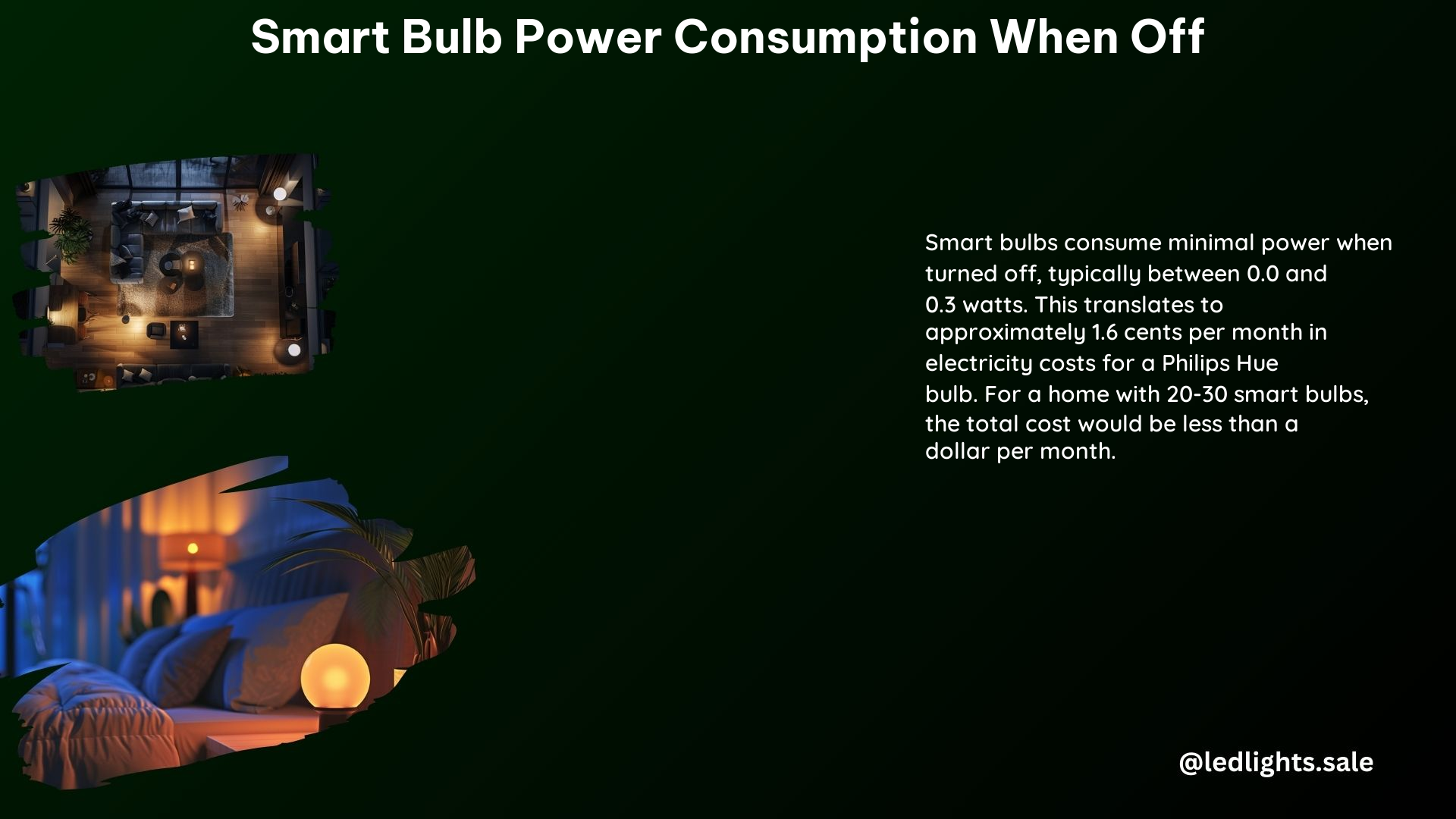Smart bulbs, despite their energy-efficient nature, do consume a small amount of power even when they are turned off. This phenomenon, known as “standby power” or “vampire power,” is a result of the constant connection required to maintain the smart features of these bulbs. In this comprehensive guide, we’ll dive deep into the technical details, power consumption figures, and practical tips to help you optimize the energy efficiency of your smart bulb setup.
Understanding the Power Consumption of Smart Bulbs in Standby Mode
Smart bulbs are designed to be connected to a control system, such as Wi-Fi or Bluetooth, to enable remote control, scheduling, and other automated features. This constant connection requires a small amount of power, even when the bulb is turned off. This standby power consumption is a trade-off for the convenience and advanced functionality offered by smart bulbs.
Factors Affecting Standby Power Consumption
The standby power consumption of smart bulbs can vary depending on several factors, including:
- Bulb Manufacturer and Model: Different smart bulb manufacturers and models may have varying levels of standby power consumption.
- Connectivity Technology: The type of connectivity used by the smart bulb, such as Wi-Fi or Bluetooth, can impact the power consumption in standby mode.
- Additional Features: Smart bulbs with more advanced features, like motion sensors or color-changing capabilities, may have slightly higher standby power consumption.
Quantifying Standby Power Consumption
To provide a more concrete understanding of smart bulb standby power consumption, let’s look at some specific examples:
-
Philips Hue Bulb: The Philips Hue smart bulb, a popular choice in the smart home market, has a standby power consumption of 0 to 0.3 watts. This translates to approximately 1.6 cents per month in electricity costs, assuming an average electricity rate of $0.13 per kWh.
-
GoControl Z-Wave Bulb: The GoControl Z-Wave smart bulb, which uses a different connectivity protocol, has a standby power consumption range of 0.6 to 4.8 watts. The exact cost will vary depending on your local electricity rates and usage patterns.
It’s important to note that these figures are just examples, and the actual standby power consumption of your smart bulbs may differ based on the specific model and manufacturer.
Maximizing Energy Efficiency with Smart Bulbs

Despite the standby power consumption, smart bulbs can still provide significant energy savings compared to traditional incandescent bulbs. Here’s how you can further optimize the energy efficiency of your smart bulb setup:
LED Technology
Smart bulbs are typically LED-based, which means they use significantly less power than traditional incandescent bulbs. LED bulbs can be up to 80% more energy-efficient than their incandescent counterparts, providing substantial long-term energy savings.
Motion Sensors and Automated Scheduling
Many smart bulbs come equipped with motion sensors or the ability to integrate with home automation systems. By leveraging these features, you can set up automated schedules or motion-activated lighting, ensuring that the lights are turned off when not needed, further reducing energy consumption.
Dimming Capabilities
Smart bulbs often have the ability to be dimmed, which can significantly reduce their power consumption. By dimming the bulbs to the appropriate brightness level for your needs, you can achieve additional energy savings.
Smart Plugs and Energy Monitoring
To gain more control and visibility over the power consumption of your smart bulbs, consider using smart plugs. These devices can monitor the energy usage of your bulbs and provide insights to help you optimize your energy management.
Conclusion
Smart bulbs, while offering a range of convenient features, do consume a small amount of power even when they are turned off. However, the standby power consumption is generally minimal, typically ranging from 0 to 4.8 watts, depending on the specific bulb model and manufacturer.
By understanding the technical details, power consumption figures, and practical tips outlined in this guide, you can effectively manage the energy efficiency of your smart bulb setup and maximize the long-term energy savings. Remember, the key to optimizing your smart bulb energy consumption lies in a combination of smart features, automated controls, and conscious energy-saving practices.
